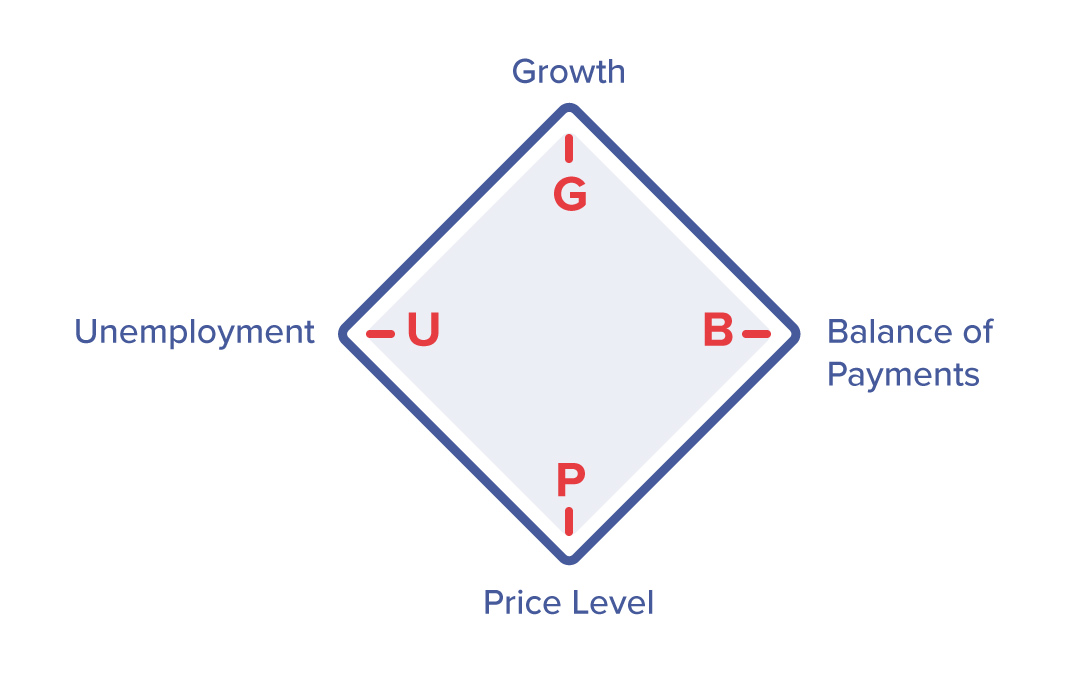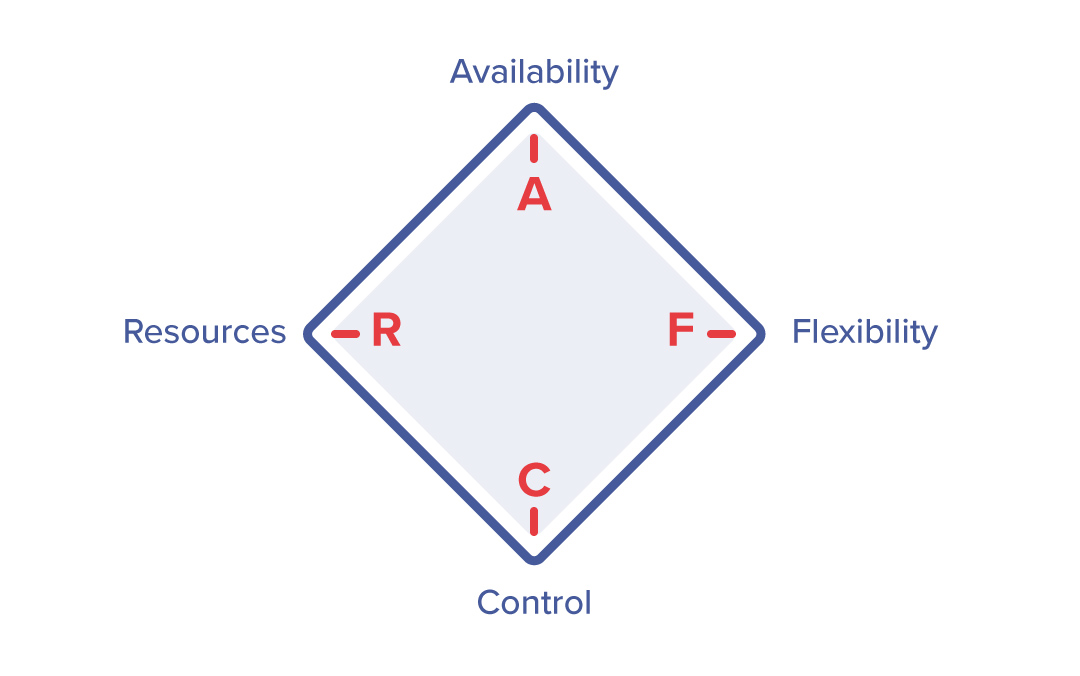In economic theory, there is a concept known as the magic square of economic policy. Anyone responsible for macroeconomic results must optimize the following four indicators:
- economic growth
- unemployment
- price level (inflation)
- foreign payments balance
The trick of this game is that improving one indicator automatically leads to the deterioration of one or two other indicators. For example, if you decide to boost economic growth and fight unemployment by increasing governmental investments, you consequently fuel monetary inflation. Fighting high prices with high interest rates undermines economic growth, increasing unemployment and affecting the exchange rate of your local currency, which also has implications for the balanced payment balance of foreign trade. Balancing all four goals is akin to attempting to achieve a delicate equilibrium.

As a manager responsible for managing data in a digital-centric company, you are in a similar position, only the vertices of your magic square have different names. The four contradicting goals of the magic square of data management are:
Data Availability: The Cornerstone of Prosperity
Ensuring data availability is like maintaining a reservoir at full level, ready to quench the thirst of decision-makers. Organizations often face the challenge of balancing accessibility with governance. Striking the proper balance allows for a free flow of information without compromising the integrity of the data. In this pursuit, advanced technologies such as cloud storage and real-time data processing become the magic spells that enhance the reservoir’s capacity and flow, ensuring that the well of data availability never runs dry.
Data Control (Security and Quality): Safeguarding Data Integrity and Trustworthiness
Data control, encapsulating security and quality, acts as a robust defense mechanism shielding the organization’s information assets. Security measures, including encryption, access controls, and continuous monitoring, operate as the frontline guards. Simultaneously, maintaining data quality demands a meticulous approach, resembling the precision of a manufacturing process. The synergy between security and quality assurance creates a formidable barrier against data breaches and misinformation, establishing a foundation of trust in the reliability of organizational data.
Solution Flexibility: Adapting to Shifting Realities
In the dynamic tech landscape, solution flexibility becomes a crucial asset, allowing seamless adaptation to evolving trends. Comparable to a well-designed ship navigating turbulent waters, flexible data solutions leverage scalable architectures and modular systems. This adaptability empowers organizations to pivot swiftly in response to emerging technologies, ensuring the longevity and relevance of data management strategies.
Costs: Balancing the Ledger of Resources
Achieving financial equilibrium in data management mirrors the strategic management of a kingdom’s treasury. Efficient resource allocation involves prudent investments in technology, talent, and infrastructure. Cost-effectiveness is not synonymous with cutting corners but rather optimizing expenditures to maximize return on investment. Implementing lean processes, exploring open-source solutions, and fostering a culture of efficiency guide managers in maintaining a balanced ledger, ensuring that financial resources are allocated with precision and foresight.

Now, it is evident that maximizing one of the goals inevitably leads to compromising the others. The more accessible you make your enterprise data, the higher the risks posed to the security domain. Through the democratization of data management, you relinquish control over data quality and trustworthiness. Increasing overall flexibility and reducing reaction time to new requirements can only be achieved by either relaxing security and quality measures or investing in new resources, consequently escalating costs. While the appetite for data is almost infinite, budgets never are. Thus, you find yourself returning to the circle (a bit ironic when talking about a square), seeking compromises among availability, security, and flexibility.
What are the conclusions from this tricky game?
First, there is no single “perfect” solution; there might be more “good enough” solutions representing different combinations and balanced compromises among the four goals. So the strategy in this “game of data” will be about searching for the optimal balance, and we can again see the analogy with the economic “equilibrium state” where all goals are at satisfactory levels and in a dynamic yet stable constellation.
Second, there is no “one-size-fits-all” solution to this puzzle. Similarly to economics or society, in some situations, it is better to lean more towards centralization, while in other cases, it is worth allowing for more spontaneity, decentralization, and freedom, which fosters creativity. Therefore, in data management, we see that in larger companies, it is better to introduce data platforms like three-lane highways rather than maintaining a single solution.
Finally, the enterprise data environment and respective enterprise data platform can be neither completely designed/planned upfront by super-experienced architects nor can its development be left fully to spontaneous processes in autonomous silos across the company. The balanced environment optimizing all four goals can be achieved by a gradual and interactive process of “supervised evolution”. This means that some particular steps are driven by a natural selection of best-fitting features while overall it is supervised and managed by smart managers in the direction that leads to achieving a mutually shared vision.
Author: Petr Hajek